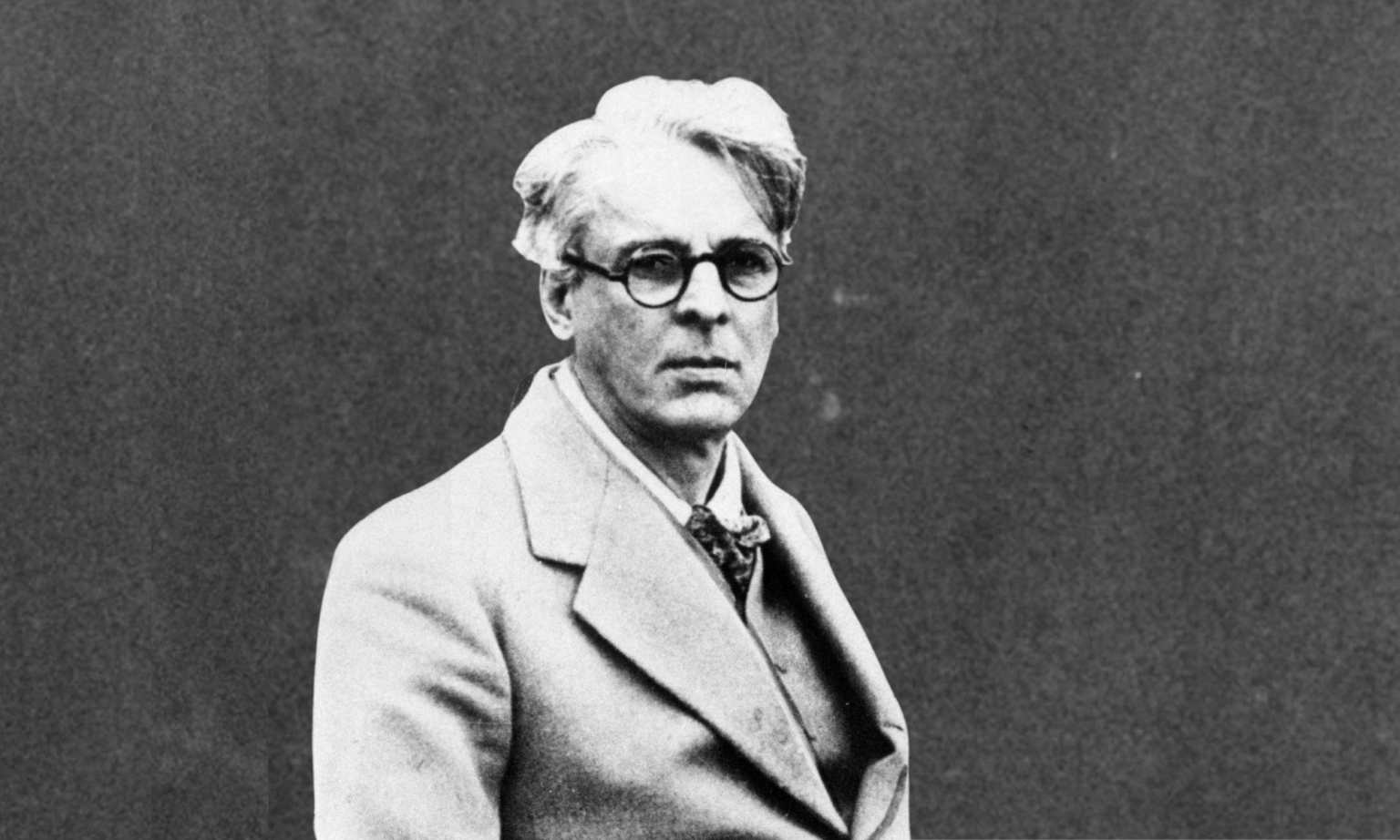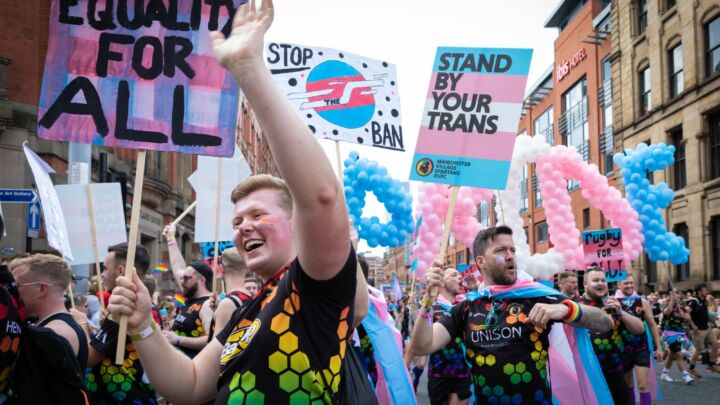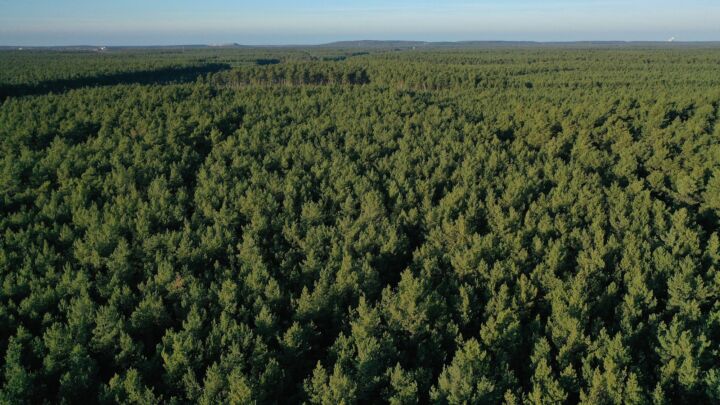
Long-read
WB Yeats: why we should still read this ‘problematic’ poet
A century on from his Nobel Prize, his politics may be difficult, but the poetry remains sublime.
A hundred years ago this month, the Nobel Prize for Literature was given to the Irish poet and dramatist, WB Yeats. It was awarded ‘for his always inspired poetry, which in a highly artistic form gives expression to the spirit of a whole nation’. The then chair of the Nobel committee described Yeats as ‘the interpreter of his country’.
Yeats described the prize as ‘Europe’s welcome to the Free State’, the name initially given to the Irish state (comprising 26 of the 32 counties on the island of Ireland) after the War of Independence (1919-1921). He was shocked – or at least feigned to be shocked – by the award. ‘I did not know the Swedish Academy had heard of me’, he said at the time.
In November 1923, Yeats was 58. Much of his most important work was crammed into the remaining 15 years of his life. Indeed, he wrote his last poem a week before he died in January 1939 – a notebook and pencil apparently slipped out of his hand while he was on his deathbed. By the time he received the Nobel Prize, he was already considered a major poet. And no wonder: his work and prominence was to straddle two centuries, and his influence on many of the great 20th-century poets – including Sylvia Plath, Ted Hughes, WH Auden and Dylan Thomas – was profound.
Yet a century on from winning the Nobel Prize, Yeats’s star has waned significantly. Today his work is little taught, referenced or even read. Phrases such as ‘No country for old men’ (from ‘Sailing to Byzantium’), or ‘things fall apart’ (from ‘The Second Coming’) continue to resonate of course. But Yeats doesn’t appear on universities’ so-called postcolonial syllabuses, despite him being at the heart of an anti-colonial struggle. He is increasingly seen as out of step with the values and beliefs that prevail in contemporary literature departments and beyond. His values, his politics, his beliefs, his associations place him out of bounds in these culturally censorious times.
This is our loss. Yeats’s work should be explored and enjoyed precisely because it is of another time and place. He provides a path to various philosophies, mythologies and strands of Irish nationalism for both British and Irish readers. More importantly, he is the creator of some of the most musical and profound verse in the English language.
The battle for Ireland
William Butler Yeats was born in a middle-class suburb of Dublin in 1865. He belonged to the Protestant Ascendancy, the Anglo-Irish economic and social elite that had dominated Ireland politically and economically since the 18th century. His father’s side of the family held on to the Butler name. They were distant descendants of the Duke of Ormonde, who had crushed the Catholic rebellion against Protestant settlers in 1641.
But despite a privileged background, Yeats’s childhood was insecure. His father had abandoned his career as a barrister after a year and left his family behind to train as an (unsuccessful) artist in London. Yeats’s mother was from Sligo, and her side of the family had financial interests in a shipping company. Young ‘Willie’ would be regularly taken on steam passages from Liverpool to the west of Ireland. This was where Yeats grew up, on his grandparents’ estate. And it was here that Yeats always felt he belonged, as he immersed himself in the tradition and folklore of west Ireland. Indeed, it was through Yeats that the landscape and people of late 19th-century Sligo would become such a palpable presence in Anglo-Irish poetry for much of the 20th century.

Yeats began writing poetry at age 17, influenced in large part by the radical Romantics, William Blake and Percy Bysshe Shelley. Blake’s visionary images were particularly influential, and likely prompted Yeats’s exploration of spiritualism. Whereas Blake experienced visions merely walking down the street, Yeats decided he needed a medium and, for a while, drugs to see beyond the earthly realm. Soon, Irish mythology, preserved by Christian scribes, and folklore passed on from his grandparents provided arguably even greater muses. His first collection, The Wanderings of Oisin and Other Poems (1889), was published when he was 24; The Countess Kathleen and Various Legends and Lyrics (1892) three years later.
For much of his life, Yeats’s poetry was inspired by three key elements: Irish nationalism, the spirit world and the link between the two, Maud Gonne. Yeats met Gonne when he was 23 and she a year younger. Gonne was beautiful and wealthy, and had spent much of her life moving between London, Dublin and Paris. Like Yeats, she belonged to the Ascendency, and her father was an English army officer in Dublin Castle.
However, she was also an ardent Irish nationalist and a member of Young Ireland, a political movement committed to an independent Ireland. Yeats later wrote of their first meeting that it was then that ‘The troubling of my life began’. He unsuccessfully proposed to Gonne within two years and later again on three more occasions. When the Young Ireland movement was dissolved into the Irish Republican Brotherhood (IRB), Yeats joined the latter. He remained inactive, however, on the grounds of his rejection of revolutionary violence. Although he was infatuated with Gonne, he would not support her militant activism, nor would he convert to Roman Catholicism as she had done. She married John MacBride, who would be executed for his part in the Easter Rising of 1916.
It was the IRB that led the Easter Rising, although Yeats had no inkling of its insurrectionary plans. Yeats’s relationships with English high society would likely have meant he wasn’t trusted by the rebels. There was dismissiveness, too, on the part of the IRB’s leaders. Padraic Pearse, a key figure in the Easter Rising and a considerable poet in his own right, put Yeats down as ‘a mere English poet of the third or fourth rank’.
Among a large body of work, ‘Easter 1916′ is one of Yeats’s most well-known poems. In the course of its four stanzas, it charts his change in attitude to the insurrection, from some time prior to the executions of 16 of its leaders, to the executions’ aftermath and the surge in support for Irish independence.
As the poem suggests, Yeats knew the leaders personally, including James Connolly. He admits that he had never taken them seriously, ‘Coming with vivid faces / From counter or desk among grey / Eighteenth-century houses.’
Indeed, Yeats shows that he was initially indignant with the rebels for the loss of life caused by the rising, and for throwing away their own lives, ‘For too long a sacrifice / Can make a stone of the heart’. But as the final stanza progresses, he speculates upon the legacy of the rising, and asks the question ‘Was it needless death after all?’ And by the poem’s conclusion, Yeats shows that he now sees them as heroes, even MacBride, that ‘drunken vainglorious lout’.
Heroism had always been important to Yeats – he idolised the 18th-century Irish revolutionaries, Wolfe Tone and Robert Emmet, seeing them as more than human. In ‘Easter 1916’, Yeats added Pearse and his comrades to this pantheon of heroes. They were driven to act, he wrote, by ‘excess of love’ rather than animus. ‘MacDonagh and MacBride / And Connolly and Pearse / Now and in time to be, / Wherever green is worn, / Are changed, changed utterly.’ Through their sacrifice, Yeats argued, they have been transformed into symbols of Ireland’s historical striving for freedom.
Yeats’s variety of nationalism was close to that of the Fenian, John O’Leary’s. Yeats imagined it as a rural resistance, informed by an almost folkloric history. Nationalism was not a modern, urban ideology for Yeats. Yet, despite that, ‘Easter 1916’ has long fed modern Irish nationalism – and no doubt Yeats intended it to.
A fascist flirtation
Yeats is often described as an Anglo-Irish poet, and he did count among his acquaintances no lesser figures than prime ministers Herbert Asquith and Winston Churchill. Yet Yeats also strongly resented the English, largely because of British colonialism. This anti-English sentiment, combined with his enduring elitism, anti-democratic instincts and his abhorrence of the urban mob, led him, from the 1920s onwards, towards fascist politics.
Indeed, it is commonly known that Yeats wrote three marching songs for the Army Comrades Association, otherwise known as the Blueshirts. This was a pro-fascist paramilitary group that, in 1933, had attempted a Mussolini-style ‘march on Dublin’. During the Spanish Civil War, the Blueshirts fought for General Franco’s nationalists.

Yeats’s proximity to fascism didn’t stop there. In 1934, he accepted a literary prize from Nazi Germany. And in 1938, he accepted a limited edition copy of Germany Speaks, an English language anthology of propagandist essays by Nazi authors on subjects such as land, race, health and women’s affairs. It carried within it an inscription from a Nazi diplomat called Eduard Hempel, who described an ‘unforgettable afternoon’ he had spent with Yeats.
That Yeats mixed with Nazis should not be a surprise. During the 1930s, some Irish republicans saw an invasion of Britain by Nazi Germany as a stepping stone for a united Ireland, and many Irish anti-imperialists held far-right views. In 1940, for instance, over a 100 former members of the IRA formed a party called Córas na Poblachta (Republican System). At its founding, it told the press it was ready to take over the government of Ireland ‘on either a corporate or fascist basis’. Córas argued that Jews were undermining native enterprise, daubed anti-Semitic graffiti on houses and walls, and smashed the windows of Jewish businesses.
This context is not meant to excuse Yeats’s political associations and interests. It is merely to point out that he moved in authoritarian circles in which enthusiasm for national socialism and fascism was widespread.
That being said, Yeats could not realistically be described as a fascist. As with violent republicanism, his interest in it lay somewhere between a flirtation and a short-lived commitment.
No country for Yeats?
What is not in doubt is Yeats’s lifelong commitment to spiritualism. At 25, he joined the Hermetic Order of the Golden Dawn, which was devoted to studying the occult. At the time, it had around a hundred members, including Maud Gonne and the occultist philosopher, Aleister Crowley. Yeats believed that the boundaries of the spirit world and the real world were porous, and that history was in essence cyclical. He envisioned the historical process as two opposing gyres, with time endlessly winding from one gyre to another. From this perspective, he saw the tumultuous interwar years as an apocalyptic, transitional moment between what he described as an epoch of ‘objectivity’ and the coming one of subjectivity. In ‘The Second Coming’ (1920), he famously represented this destabilising change as follows:
‘Turning and turning in the widening gyre
The falcon cannot hear the falconer;
Things fall apart; the centre cannot hold;
Mere anarchy is loosed upon the world,
The blood-dimmed tide is loosed, and everywhere
The ceremony of innocence is drowned;
The best lack all conviction, while the worst
Are full of passionate intensity.’
The second stanza prophesies the coming of a figure as significant as Christ, but a ‘rough beast’, an anti-Christ, to take centre stage. It is a wonderful, terrifying poem, rich in complex imagery and ideas as Yeats struggles to represent the contrary forces at work in history. For many it signals an anticipation of the Second World War.
‘The Second Coming’ was Yeats at his elusive best. Here he gives poetic form to a profound sense of historical crisis. It is also typical of Yeats’s work, because it shows how difficult it is to categorise. He is a symbolist poet, with every line about more than one subject; something concrete, something abstract. He also distilled complex ideas, events and individuals through allegory. Maud Gonne was often a rose, Ireland’s struggle for independence, a rose tree.
It is said today that he is no longer relevant, that his sometime political flirtations put him beyond the pale. That’s a good enough reason to read anyone. We see our times and ourselves more clearly from elsewhere. And Yeats was always partly elsewhere, half-dreaming.
There is a wider point here: it ought to be perfectly possible to admire someone’s poetry and oppose their views. While Yeats’s authoritarianism and his receptivity to fascism are troubling, readers and students used to recognise the autonomy of art. They used to recognise that it is possible to value the work for the work itself, on its own terms. But too much of today’s cultural establishment has lost any sense of the autonomy of art, of its freedom from the views and actions of its creator. They have a self-regarding attitude to literature. They seem to demand of writers that they must have values that they share, that they approve of. It’s a narcissistic, consumerist and presentist approach to art.
TS Eliot once described Yeats as ‘one of those few whose history is the history of their own time, who are part of the consciousness of an age which cannot be understood without them’. That at least is true. Yeats leads us to many places, and the journey remains unforgettable.
Michael Crowley is an author and dramatist. Visit his website here.
Pictures by: Getty and YouTube.
To enquire about republishing spiked’s content, a right to reply or to request a correction, please contact the managing editor, Viv Regan.








Comments
Want to join the conversation?
Only spiked supporters and patrons, who donate regularly to us, can comment on our articles.